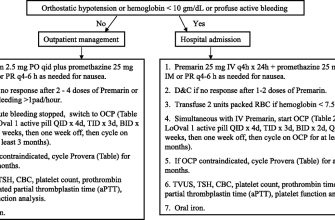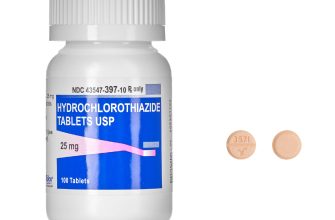Amoxicillin clavulanate is often a first-line treatment for bacterial ear infections (otitis media). It effectively targets a broad range of bacteria commonly responsible for these infections, including Streptococcus pneumoniae and Haemophilus influenzae.
Your doctor will prescribe a specific dosage based on your age and weight. Typically, the medication is taken orally twice daily for 7-10 days. Strict adherence to the prescribed dosage and duration is vital for complete eradication of the infection. Incomplete treatment can lead to recurring infections or antibiotic resistance.
Common side effects include diarrhea, nausea, and vomiting. More serious, though less frequent, reactions are possible. Consult your physician immediately if you experience severe allergic reactions such as skin rashes, swelling, or difficulty breathing. Always inform your doctor of any existing medical conditions or allergies before starting treatment.
Remember: This information does not replace professional medical advice. Always consult your doctor or other qualified healthcare provider for diagnosis and treatment of ear infections. Self-treating can be risky and may delay appropriate care.
- Amoxicillin Clavulanate for Ear Infections
- Dosage and Administration
- Side Effects
- Alternatives and Considerations
- Effectiveness and Duration
- What is Amoxicillin Clavulanate?
- How Does it Treat Ear Infections?
- When is it Prescribed for Ear Infections?
- Potential Side Effects of Amoxicillin Clavulanate
- Alternatives to Amoxicillin Clavulanate for Ear Infections
- Other Antibiotic Options
- Using Amoxicillin Clavulanate Safely and Effectively
- When to See a Doctor Regarding Ear Infections
- When to See a Doctor for Children
- When to See a Doctor for Adults
Amoxicillin Clavulanate for Ear Infections
Amoxicillin clavulanate is frequently prescribed for ear infections (otitis media), particularly those caused by bacteria. It combines amoxicillin, an antibiotic effective against many bacteria, with clavulanate, which inhibits an enzyme that some bacteria produce to resist amoxicillin. This combination broadens its effectiveness.
Dosage and Administration
Your doctor will determine the appropriate dosage based on your age, weight, and the severity of your infection. Typical doses involve taking the medication orally, usually twice daily. Always follow the prescribed dosage and duration of treatment precisely; do not stop taking the medication early even if you feel better. Incomplete treatment can lead to recurring infections or antibiotic resistance.
Side Effects
Common side effects include diarrhea, nausea, vomiting, and rash. Less common, but more serious, reactions can occur. Seek immediate medical attention if you experience allergic reactions such as difficulty breathing, swelling of the face or throat, or hives. Report any persistent or severe side effects to your doctor.
Alternatives and Considerations
Amoxicillin clavulanate may not be suitable for everyone. Allergies to penicillin antibiotics necessitate alternative treatment options. Your doctor will consider your medical history and other factors to choose the most appropriate antibiotic. If your infection is caused by a virus, antibiotics will be ineffective. Proper diagnosis is critical before starting treatment.
Effectiveness and Duration
Most ear infections respond well to amoxicillin clavulanate within a few days. However, the full course of treatment, typically 7-10 days, must be completed for optimal results. Follow-up appointments may be necessary to assess treatment effectiveness.
What is Amoxicillin Clavulanate?
Amoxicillin clavulanate is a combination antibiotic used to treat bacterial infections. It contains amoxicillin, a penicillin-type antibiotic, and clavulanate, which protects amoxicillin from being broken down by certain enzymes produced by bacteria, making it more effective against a wider range of bacteria.
This combination is particularly useful for treating ear infections, which are often caused by bacteria resistant to amoxicillin alone. Clavulanate extends the antibiotic’s reach, increasing its ability to fight off these resistant strains.
Amoxicillin clavulanate is available in various forms, including tablets, capsules, and liquid suspensions, making it suitable for patients of different ages. Dosage depends on factors like age, weight, and infection severity; always follow your doctor’s instructions.
While generally safe, possible side effects include diarrhea, nausea, and vomiting. Serious allergic reactions are rare but require immediate medical attention. Inform your doctor about any allergies or pre-existing medical conditions before taking this medication.
Remember, Amoxicillin clavulanate only combats bacterial infections. Viral ear infections will not respond to this treatment. A doctor’s diagnosis is key to appropriate treatment.
How Does it Treat Ear Infections?
Amoxicillin clavulanate combats ear infections by targeting the bacteria responsible. Amoxicillin, a penicillin-type antibiotic, directly kills many bacteria. Clavulanate, however, plays a crucial role by inhibiting beta-lactamases–enzymes some bacteria produce to deactivate amoxicillin. This combined action ensures the antibiotic effectively reaches and eliminates the bacteria causing the infection, relieving symptoms like pain and inflammation.
The medication works systemically; you swallow a pill, and your body absorbs it, distributing the drug to reach the infected area in your ear. This treatment method is preferred for many middle ear infections because it addresses the root cause of the problem.
Successful treatment relies on completing the prescribed course. Stopping early can lead to persistent infection or the development of antibiotic-resistant bacteria. Consult your doctor if you experience any adverse effects or if your symptoms worsen.
Remember, always follow your doctor’s instructions for dosage and duration. They will tailor the treatment to your specific needs and the severity of your infection. This information should not be used as a substitute for medical advice from a healthcare professional.
When is it Prescribed for Ear Infections?
Amoxicillin-clavulanate is typically prescribed for ear infections (otitis media) when a doctor suspects bacterial infection. This usually happens after a thorough examination and potentially some initial tests.
Specifically, doctors often choose this antibiotic when the infection shows signs of severity, such as high fever, significant ear pain, or a prolonged duration of symptoms without improvement using other treatments.
It’s also a common choice if a patient hasn’t responded well to other antibiotics, or if there’s a high likelihood of the infection being caused by bacteria resistant to amoxicillin alone. The presence of pus or fluid behind the eardrum is another indicator.
However, doctors carefully consider the patient’s age, allergy history, and other medical conditions before prescribing amoxicillin-clavulanate. They always weigh the benefits against the potential risks of antibiotic use.
Remember: Always consult a healthcare professional for diagnosis and treatment. They can accurately assess the situation and determine the most appropriate course of action.
Potential Side Effects of Amoxicillin Clavulanate
Amoxicillin clavulanate, while effective, can cause side effects. These vary in severity and frequency.
Common side effects often resolve without intervention. These include:
- Diarrhea
- Nausea
- Vomiting
- Stomach upset
- Rash
If you experience these, drink plenty of fluids and consider over-the-counter medications for symptom relief, like antidiarrheal medications. However, always check with your doctor or pharmacist before taking any additional medications, especially if symptoms are severe or persistent.
Less common, but more serious side effects require immediate medical attention. These include:
- Severe allergic reactions (difficulty breathing, swelling of the face, lips, or tongue)
- Jaundice (yellowing of the skin or eyes)
- Dark urine
- Unusual bleeding or bruising
- Severe abdominal pain
If you experience any of these serious side effects, stop taking the medication and seek immediate medical help.
Other possible side effects:
- Changes in taste
- Vaginal yeast infection
- Headache
- Dizziness
This information is not exhaustive. For a complete list of potential side effects, consult the medication’s package insert or your doctor or pharmacist. They can provide personalized advice based on your health history and the specifics of your treatment.
Alternatives to Amoxicillin Clavulanate for Ear Infections
If amoxicillin-clavulanate isn’t suitable, your doctor might prescribe azithromycin, a macrolide antibiotic. This is a good option for those with mild to moderate ear infections and who are not allergic to penicillin. Azithromycin offers a convenient dosing schedule, often a five-day course.
Other Antibiotic Options
Cefdinir or cefuroxime are other cephalosporin antibiotics that can effectively treat ear infections. These are usually prescribed for more severe infections or when other antibiotics haven’t worked. Your doctor will consider your specific needs and medical history when choosing the right antibiotic.
For certain bacterial infections, a different class of antibiotics like clindamycin might be considered. However, this is usually a secondary choice after considering penicillin and cephalosporin alternatives. Always discuss all treatment options with your doctor.
Using Amoxicillin Clavulanate Safely and Effectively
Always follow your doctor’s instructions precisely. Take the entire prescribed course, even if you feel better sooner. Skipping doses can lead to treatment failure and resistant bacteria.
Take the medication with a full glass of water. Avoid taking it with dairy products or antacids, as these can reduce absorption.
Monitor for side effects such as diarrhea, nausea, or allergic reactions (rash, itching, swelling). Contact your doctor immediately if you experience any serious side effects.
Store the medication at room temperature, away from moisture and direct sunlight. Keep it out of reach of children and pets.
| Possible Side Effect | Action |
|---|---|
| Mild Diarrhea | Drink plenty of fluids; consider probiotics if persistent. |
| Severe Diarrhea | Contact your doctor immediately; this may indicate Clostridium difficile infection. |
| Allergic Reaction | Seek immediate medical attention. This is a medical emergency. |
Inform your doctor about all medications you are currently taking, including over-the-counter drugs and herbal supplements. Some medications can interact with amoxicillin clavulanate.
Drink plenty of fluids to help your body flush out the medication and stay hydrated.
If you miss a dose, take it as soon as you remember unless it’s almost time for your next dose. Never double the dose.
Follow up with your doctor as scheduled to monitor your progress and ensure the infection is cleared.
When to See a Doctor Regarding Ear Infections
Seek immediate medical attention if your ear infection symptoms are severe or worsen despite home remedies. This includes high fever (over 102°F or 39°C) in adults, or over 100.4°F (38°C) in children, intense ear pain, hearing loss, dizziness, or facial weakness.
When to See a Doctor for Children
- Children under six months with any ear infection symptoms should be seen by a doctor immediately.
- Children who are experiencing ear pain lasting more than 48 hours need medical evaluation.
- If your child has a fever lasting longer than 24 hours, or if the fever is accompanied by lethargy or irritability, consult your pediatrician.
- Ear discharge (especially if it’s yellow, green, or bloody) requires prompt medical attention.
When to See a Doctor for Adults
- If ear pain persists for more than a week despite over-the-counter pain relievers, consult a doctor.
- If you experience a sudden decrease in hearing, or if you develop severe dizziness or balance problems, seek medical help immediately.
- Recurring ear infections, or those that frequently return despite treatment, warrant a consultation with your healthcare provider to explore potential underlying issues.
- Fluid draining from the ear that lasts several days may indicate a serious complication needing medical care.
Remember, early diagnosis and treatment can prevent serious complications. Don’t hesitate to contact your doctor if you have any concerns.










